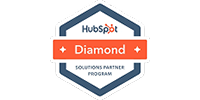Why should your company focus on revenue operations - not sales or marketing?
We’ve worked with hundreds of clients on “sales” and “marketing” programs, and what we’ve learned is… we’re not into sales and marketing.
Organizations should prioritize establishing a robust Revenue Operations function and move away from traditional sales and marketing terminologies and structures. This shift is grounded in the financial effectiveness inherent in the contemporary Revenue Operations model.
Why change? Because sales and marketing departments are broken.
For the past 25 years, sales and marketing departments have attempted to evolve independently, leading to persistent friction due to differing goals and objectives, disparate operating systems, and misalignment. It’s a constant contest to see which department should get the credit and which should shoulder blame. Too often these departments are at odds and not working cohesively.
The most robust marketing campaigns are useless if they don’t close. Your best sales team will be sitting unused without demand generation. And churn will decimate your target customer acquisition costs unless you care about customer success. Everyone needs to work together for common goals, which ultimately is revenue.
Revenue Operations, or RevOps for short, is a holistic approach to managing revenue generation processes across an organization. It involves integrating and aligning various departments, systems, and processes that contribute to revenue growth, such as sales, marketing, customer success, finance, and operations.
How is a Revenue Operations function structured?
If you're interested in demand generation consulting for your business, here are some steps to get started:
Define your goals: Before beginning any demand generation campaign, it's important to define clear goals and objectives. What are you hoping to achieve? Are you looking to increase revenue, generate more leads, or improve brand awareness?
Come with context: Historical or contextual information is helpful in understanding how your company has gotten to where it is today. Was everything going great but now you have new competitors gaining ground on you? What have you tried before, and what were those results?
Bring your data: Math is critical to a successful demand generation program. What is your acquisition cost now and what does it need to be? What is your lifetime value of a client, or average contract value?
What does Demand Generation Consulting Entail?
FullFunnel views the revenue operations function of an organization to be broken down into three distinct segments which are demand generation, pipeline management, and customer success.
Demand Generation
The first component of our approach is demand generation. In simpler terms, it's akin to 'leading the horse to water.' Demand generation encompasses any action or strategy that initiates a conversation with your ideal client profile (ICP). In the business-to-business sales landscape, this often results in a discovery call being scheduled and conducted. Most often, demand generation is associated with marketing, but as you’ll see in our list of pillars, it also encompasses outbound prospecting, often considered part of the sales department.
There are various tactics and channels available for demand generation, but FullFunnel considers four fundamental pillars of demand generation that are relevant to all businesses, irrespective of the products or services they offer. These pillars include:
- Peer-to-Peer Channels: This involves leveraging channels like word of mouth, networking, events, partner programs, and referrals, amongst others.
- Owned & Earned Media: This includes content created by your organization or other organizations that is not paid or sponsored but drives traffic and demand to your web properties.
- Paid Advertising: This refers to demand stimulated by purchasing visibility from media and advertising companies. This can include digital marketing efforts as well as traditional marketing mediums such as billboards, television ads, and radio broadcasts.
- Outbound Prospecting: This involves targeting potential buyers who may not be currently engaged with your business, sparking a conversation via outbound email, telephone calls, or social media.
The success of demand generation is evaluated by the cost per qualified interaction with your ideal client profile (ICP). This is quantified by measuring sales accepted leads (SALs) which are discovery calls booked and held with your ICP. By working backwards from your target acquisition cost to your cost per discovery call, any company can establish a demand generation target that aligns with a financially scalable cost of customer acquisition (CAC) rate.
Pipeline Management
The subsequent phase in revenue operations is pipeline management, as we like to refer to it, “getting the horse to drink.” In this stage, discovery calls with your ideal client profile transition into actual revenue. This transformation is facilitated by pipeline managers who navigate the sales process through steps like conducting discovery calls, submitting proposals, negotiating terms, and ultimately closing deals.
The primary metric for assessing success in pipeline management is the consistent and scalable achievement of your target acquisition cost. Essentially, the goal is to repeatedly secure new customers while staying within the predefined cost parameters. This efficient conversion of prospects into profitable customers is the cornerstone of effective pipeline management.
Customer Success
The final stage of the revenue operations cycle is customer success. In essence, it's like encouraging the horse to continually drink, and drink more, from the trough. This phase comprises activities that occur after the initial sale, all aimed at ensuring a smooth onboarding experience and fostering positive, ongoing customer relations. These actions provide opportunities for upselling, cross-selling, and the consistent creation of value for the customer.
Customer success goes beyond the initial transaction to sustain and deepen the relationship. It's about guaranteeing that the customer continues to extract value from your product or service, thus promoting customer loyalty, repeat business, and potentially even advocacy for your brand.
How can a revenue operations mindset revolutionize your business?
The goal of RevOps is to create a more streamlined and efficient revenue engine that maximizes growth and profitability. RevOps achieves this by providing a single source of truth for revenue data, improving collaboration and communication across departments, and using data-driven insights to make informed business decisions.
By shedding the outdated departmental structures and terminologies of sales and marketing, you can transform your organization into a lean, efficient revenue-generating entity.
* * *
If your organization could benefit from revenue operations services, schedule a free consultation to learn more about FullFunnel’s approach.







